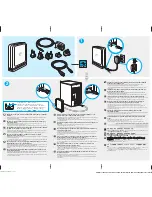
If you purge a table on the primary system, you must not re-create it on the primary system until
you are certain that the updaters have caught up, and you have purged and re-created the table
on the backup system.
For NonStop SQL/MP and NonStop SQL/MX databases, RDF replicates the following file-label
modification:
PURGEDATA
Enscribe Databases
For Enscribe databases, RDF replicates the following file-label modifications:
Only when creating an audited file
CREATE
Only when increasing the number of extents of an audited
file
ALTER MAXEXTENTS
Enscribe files only (if REPLICATEPURGE is enabled)
PURGE
Only when purging data from an audited file
PURGEDATA
RDF does not replicate the following operations on files. If you perform any of these operations
on the primary system, you also need to perform the operation on the backup system:
•
File-label modifications not in the preceding list
•
Partition key changes
•
Alternate-key file changes
To perform DDL operations on Enscribe files that RDF does not replicate, there are two methods
to coordinate the operation:
The STOP TMF Method
1.
Stop application processing on the primary system.
2.
Stop TMF on the primary system; wait for RDF to read the STOP TMF message in the audit
trail and stop itself.
3.
Start TMF on the primary system so the operations on audited Enscribe files can be performed.
4.
Start RDF so that no audit trails are lost, but do not resume application processing.
5.
Perform each operation on Enscribe files on the backup system and the corresponding
operation on the primary system.
6.
Finally, resume application processing.
The STOP RDF DRAIN Method
1.
Stop application processing on the primary system.
2.
When all applications have terminated, issue the STOP RDF, DRAIN command.
3.
Perform the DDL operation on the primary system.
4.
When the purger has logged RDF event 852, perform the same DDL operation on the backup
system.
5.
START RDF on the primary system.
6.
Start application processing on the primary system.
Resynchronizing Databases
There are two ways of resynchronizing your primary and backup databases: offline and online.
With offline resynchronization you must first stop your applications and TMF on the primary
system. With online resynchronization, however, you can resynchronize entire databases, selected
volumes, a single volume, or individual tables and files while your applications continue to run
on the primary system.
164
Maintaining the Databases
Summary of Contents for NonStop RDF
Page 68: ...68 ...
Page 186: ...186 ...
Page 260: ...260 ...
Page 278: ...278 ...
Page 284: ...284 ...
Page 290: ...290 ...
Page 308: ...308 ...
Page 322: ...322 ...
Page 336: ...336 ...
Page 348: ...348 ...
Page 464: ...464 ...
Page 478: ......
















































